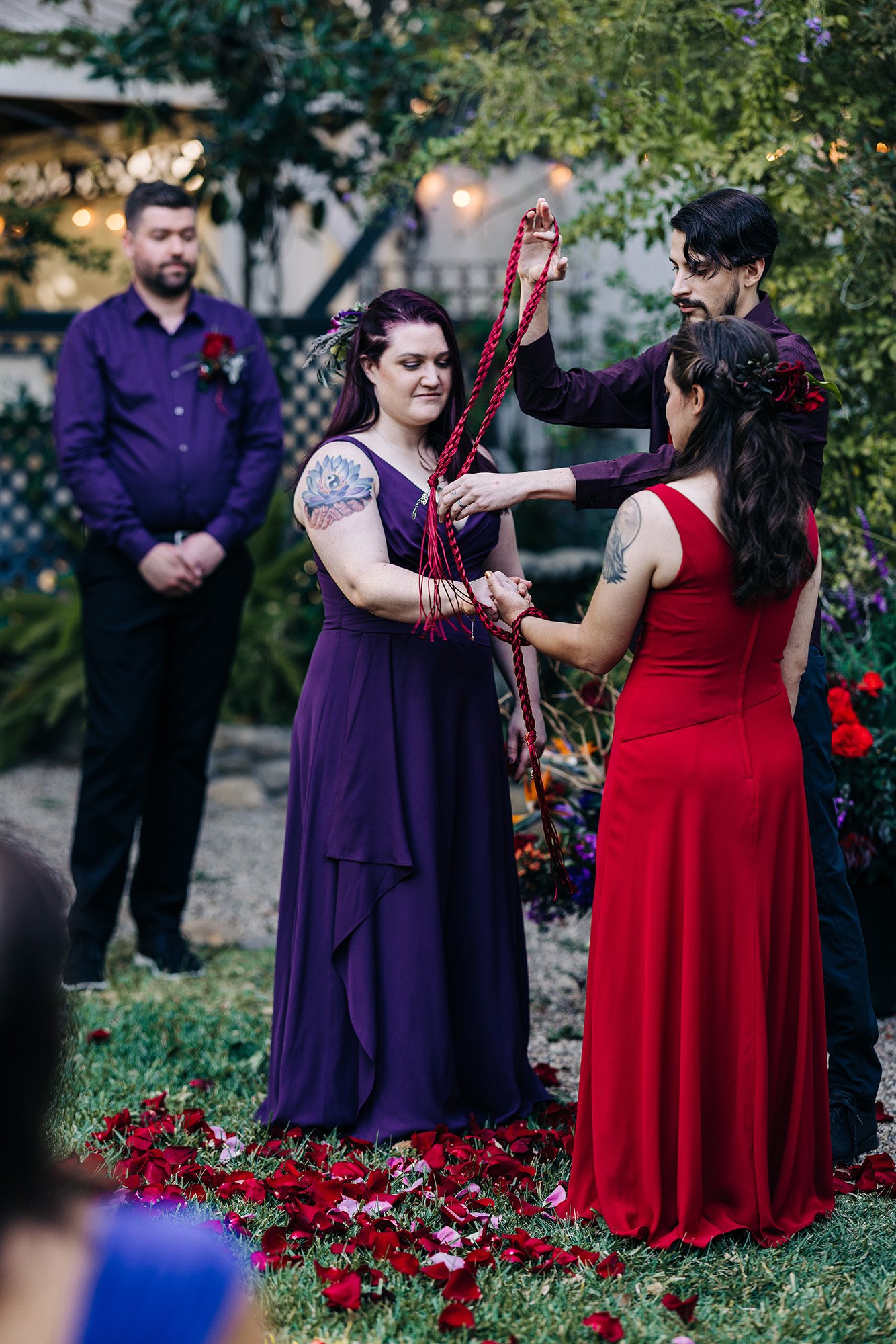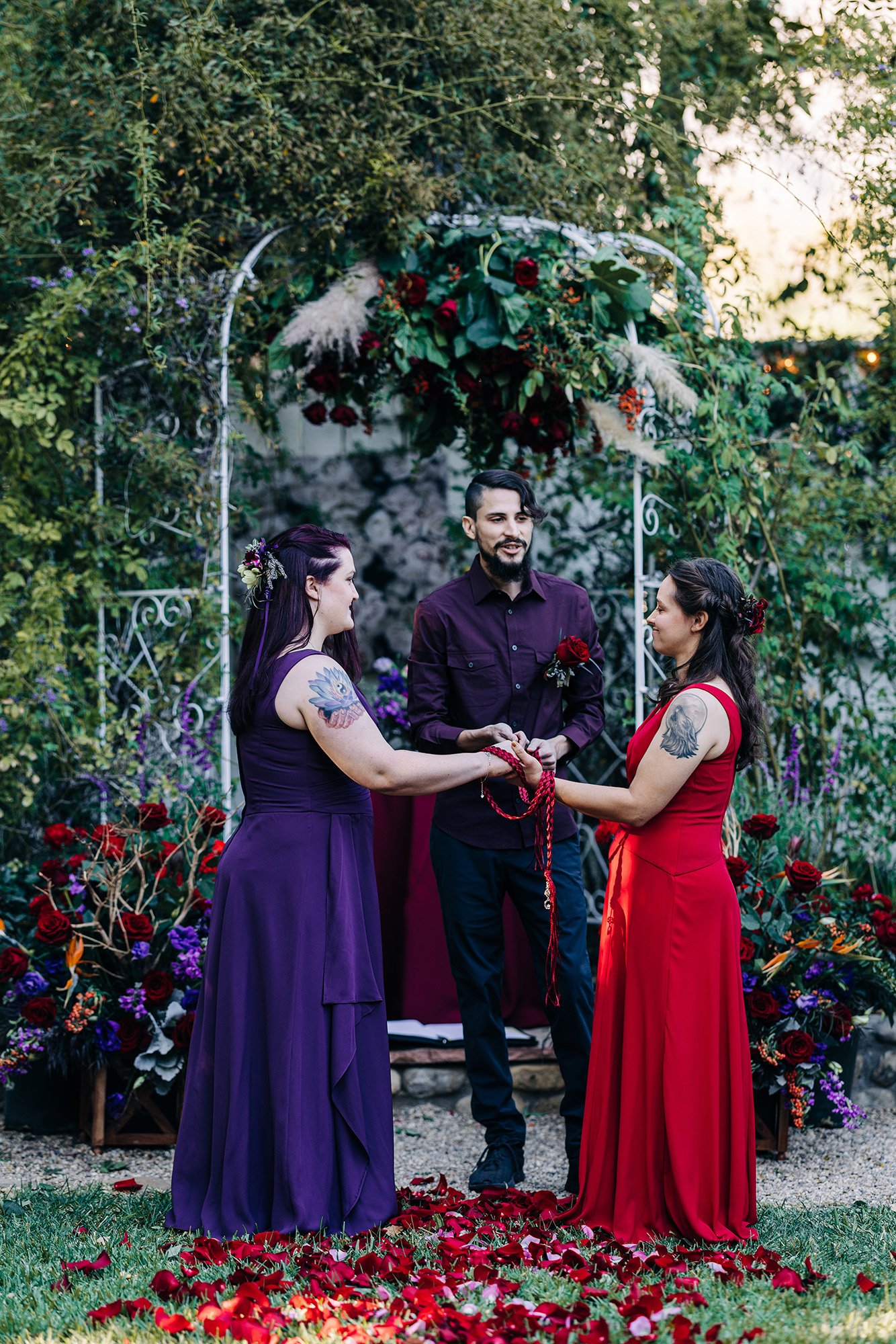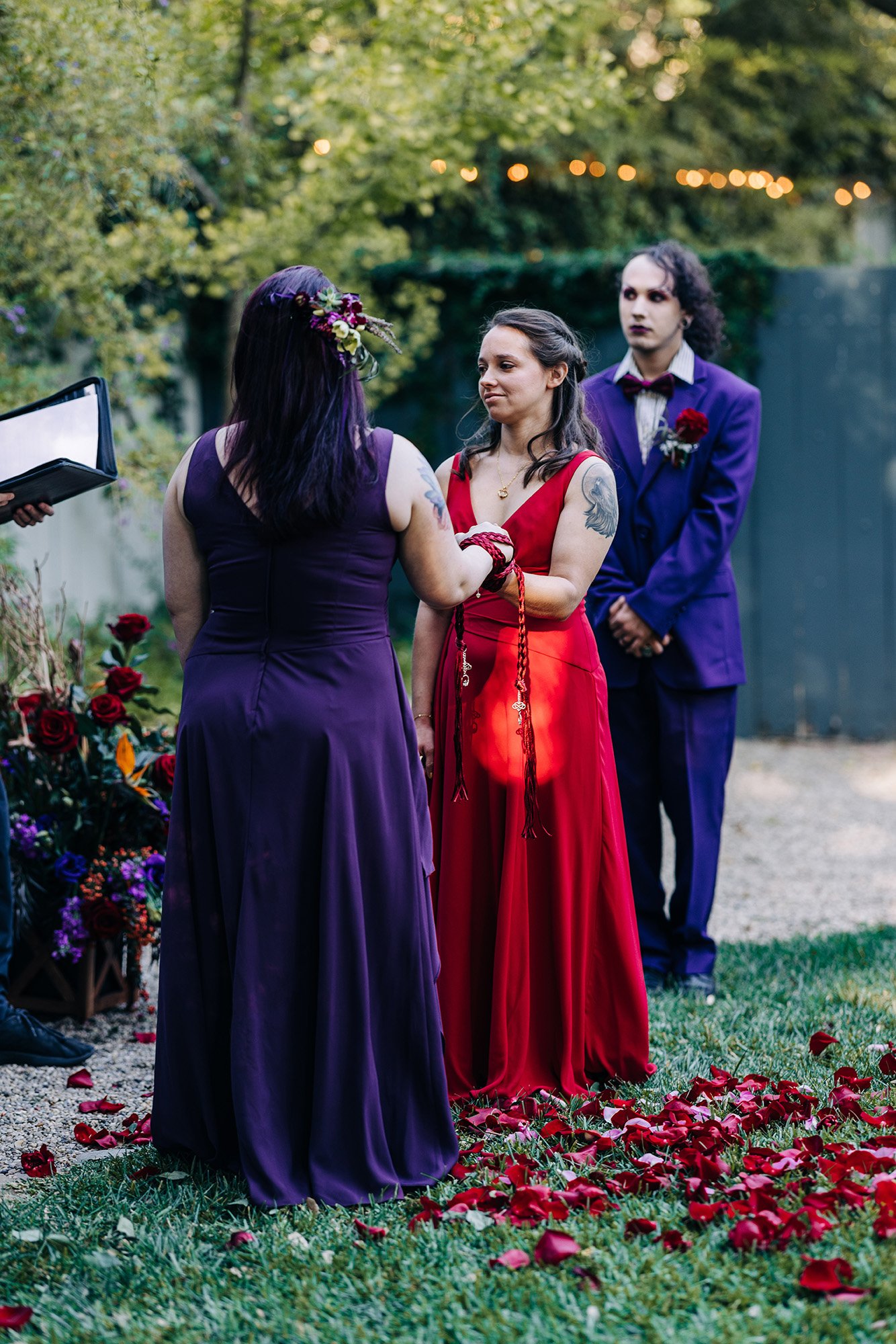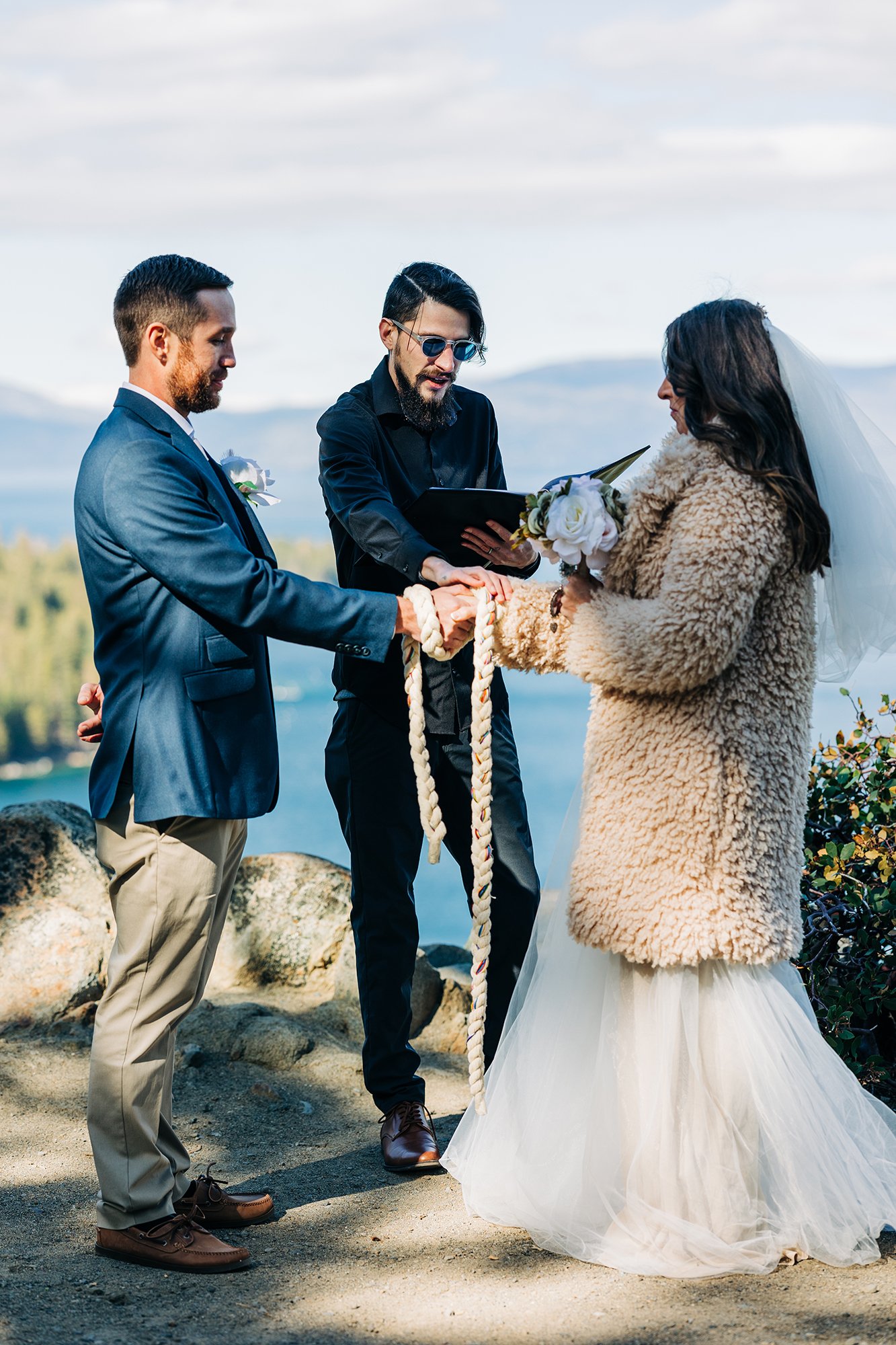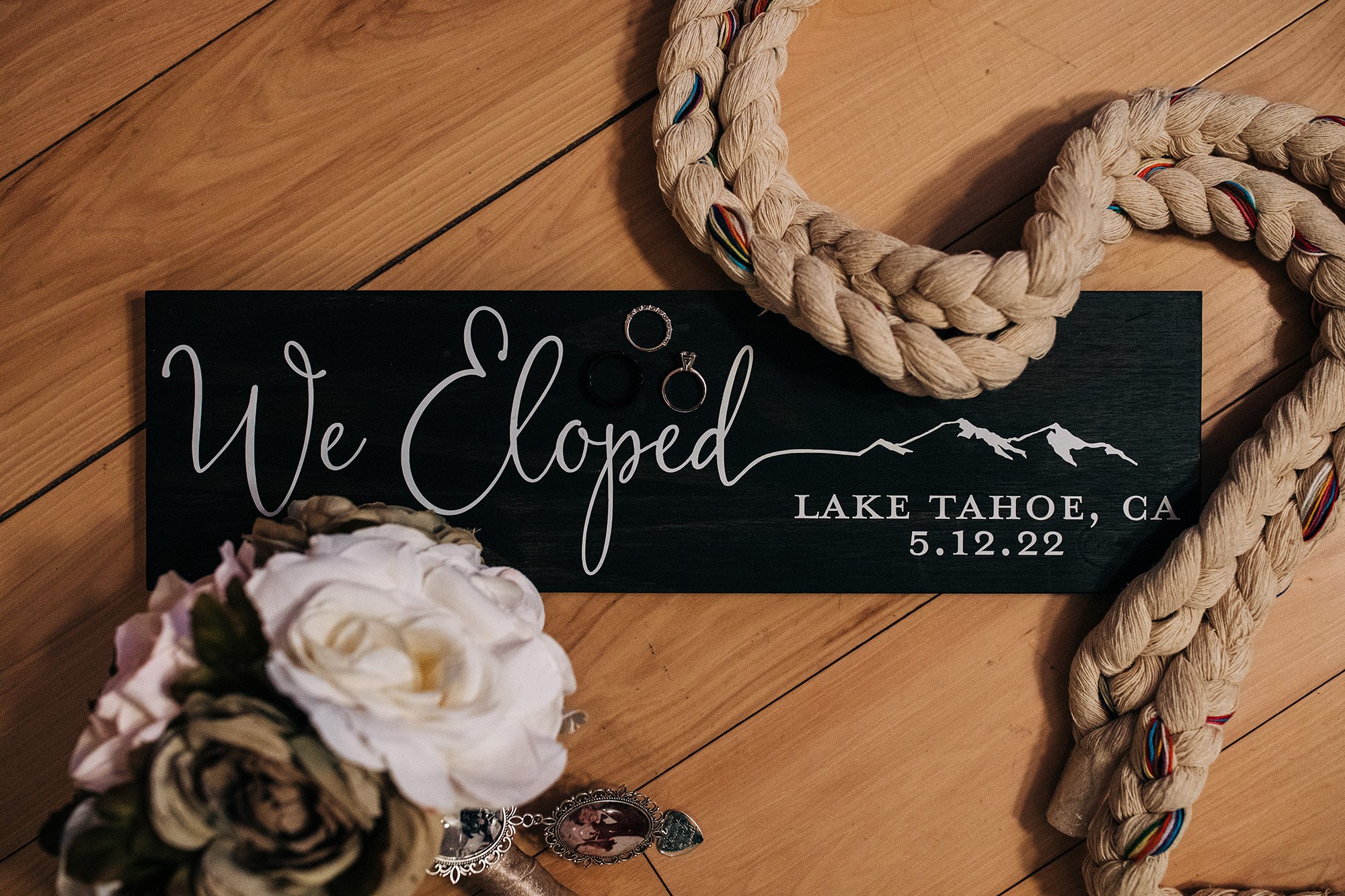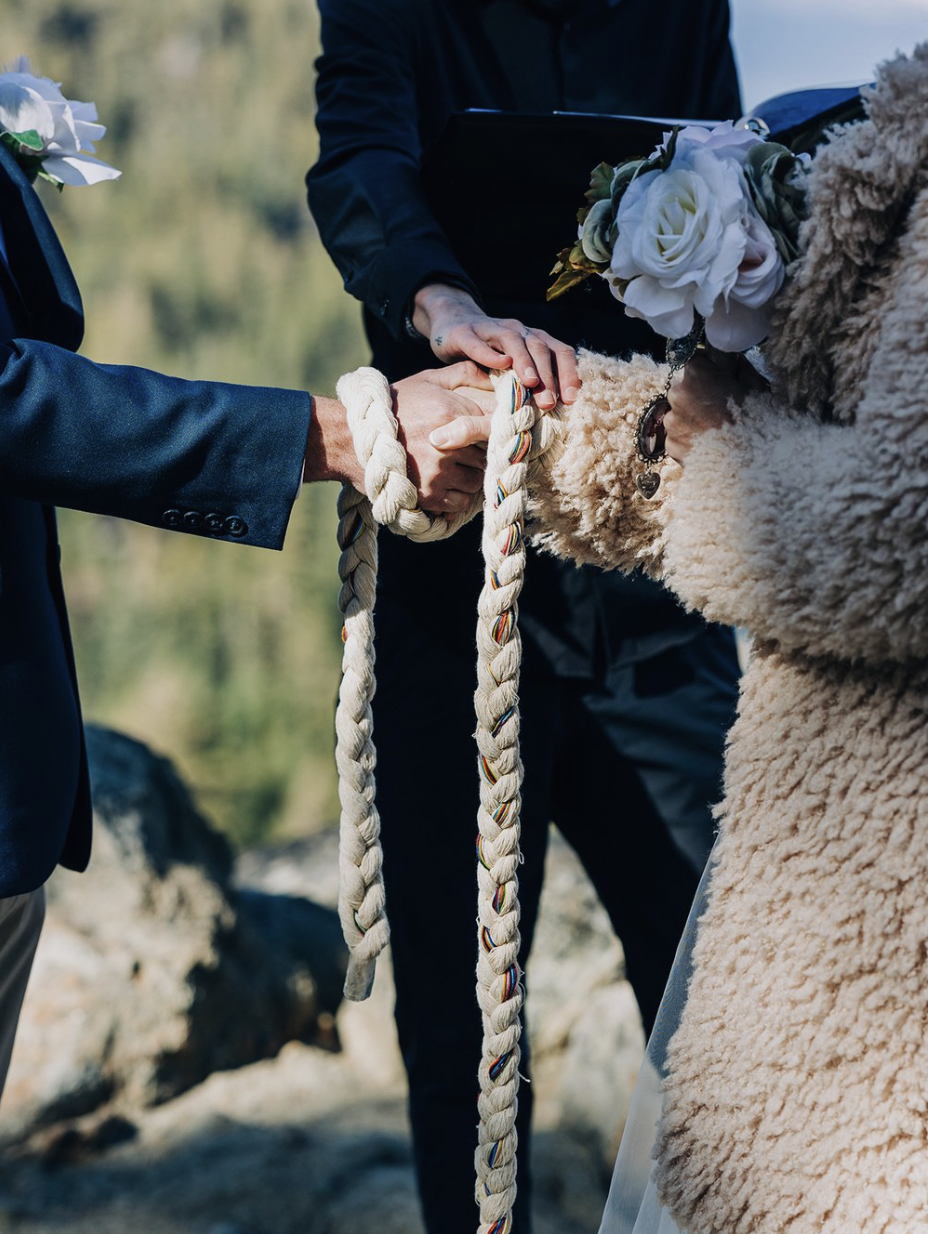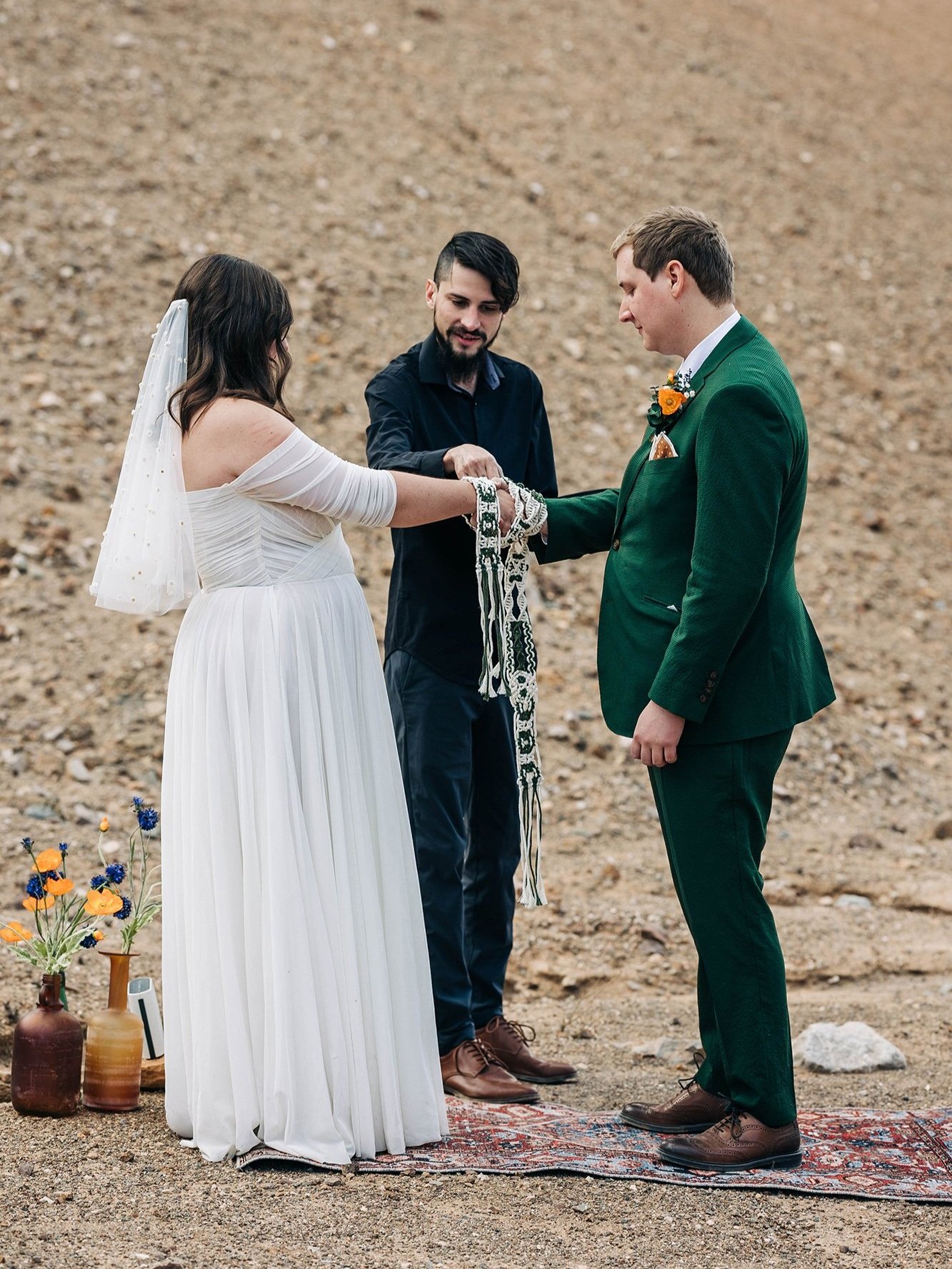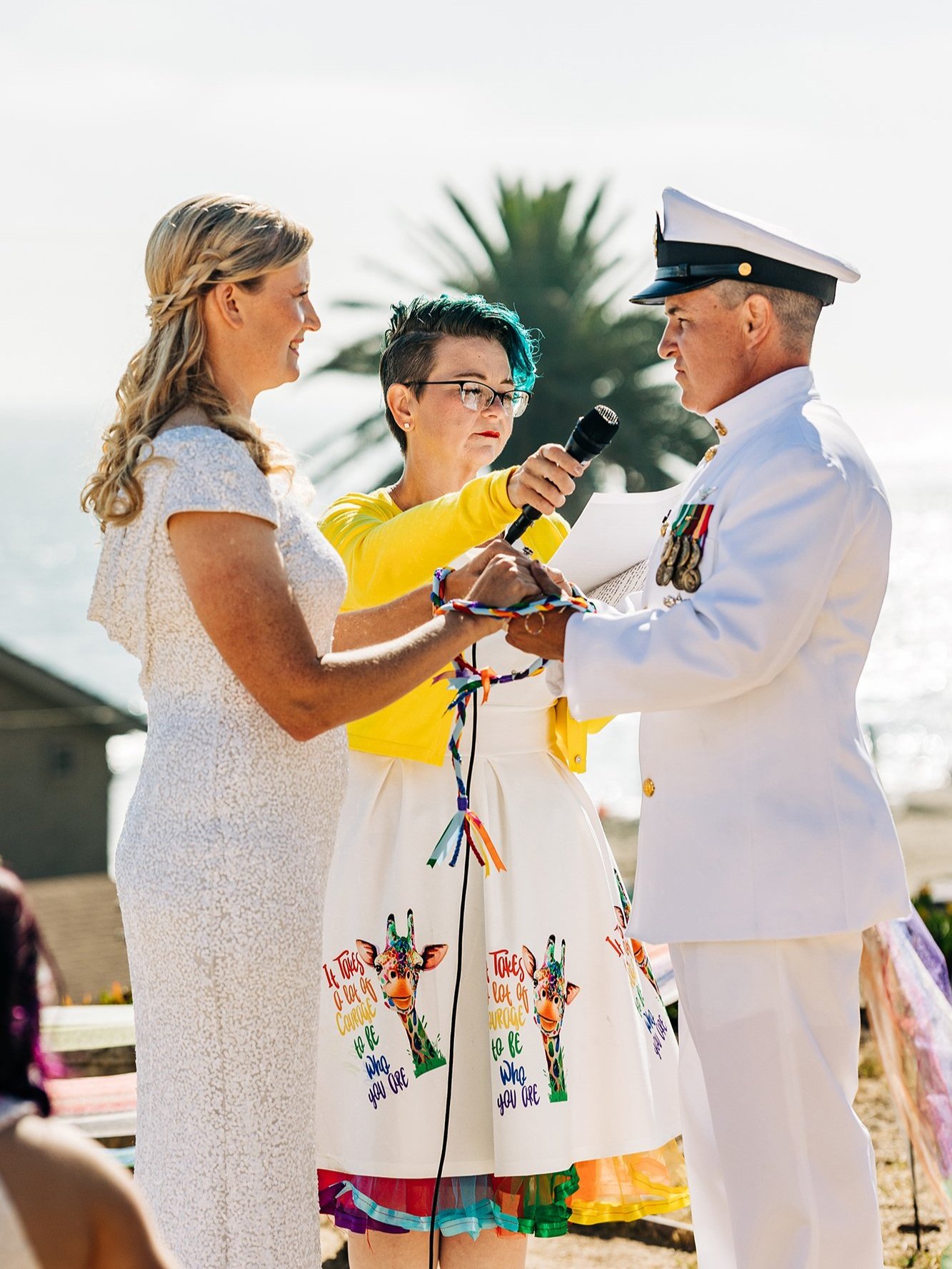Handfasting for Elopement Wedding Ceremonies
It seems strange to some people, but wedding traditions aren’t set in stone. Sure, there are a few traditions that are always in style like exchanging rings or having florals. And there are a few legally required traditions like saying “I do” or booking an officiant. But all in all, wedding traditions change as often as culture does: Wedding dresses don’t have to be white, religion can play a big role or no role in the ceremony, and couples can choose whether or not they want to publicly share vows.
One wedding tradition growing in popularity is the handfasting ceremony. And it’s easy to understand why. Handfastings are eye-catching, symbolic of commitment, and simple to customize. But that last bit—easy to customize—might leave some couples wondering how to even have a handfasting. Luckily, we have a few suggestions to get you started.
Here’s how to perform a handfasting for your elopement or wedding.
How to Perform a Simple Handfasting
A simple handfasting requires a rope or ribbon. These can be as simple or as elaborately designed as you like. Some handfasting cords are woven together with several colors or even charms. We’ve even had one couple design their own! If you choose to go with ribbon, you can pick one color that matches your attire or several braided ribbons that match the decor.
The officiant will wrap the handfasting cord or ribbon around the couple’s clasped hands—and then read a simple passage. Something along the lines of: “Your paths that started separate, have come together, and today we bind you in marriage. May this bond become stronger every day and every year ahead.”
The officiant will then unbind the couple and either place the handfasting cord on the altar or hand it to a guest for the remainder of the ceremony. After all, it’s much easier to exchange rings or read vows when your hands aren’t tied.
The Vows-Style Handfasting
Instead of tying the couple’s hands together all at once, then consecrating the bond—some couples like to extend the process. The officiant starts by draping the handfasting cord over the couple’s clasped hands. With each subsequent wrap or bind, the officiant describes a facet of their relationship. This cord starts loose, then gets tighter with each recitation.
In practice, it would probably sound something like this:
“Do you promise to celebrate each other's victories together?”
Yes! The officiant wraps hands once.
“Do you promise to support each other through tough times?”
Yes! The officiant wraps hands once.
“Do you promise to strive to see the best in your partner?”
Yes! The officiant wraps hands once.
“Do you promise to communicate with your partner when you are weak and need help?”
Yes! The officiant wraps hands once.
Traditionally, there are eight vows and eight loops binding the hands together. But this really depends on the types of vows you two choose to share and the length of the cord. Shorter cords have fewer ties, longer cords have more.
Family Handfasting
This next handfasting ceremony requires more hands on deck—and is only recommended if you have time to practice ahead of the ceremony. A fancy handfasting can include an infinity knot, in which the couple—guided by the officiant—pulls the cord to create a knot representing the wedding bond. But there’s no rule saying that you can’t bring more people into the festivities.
Especially elaborate handfasting ceremonies require several ribbons in which the couple's hands are tied by friends or family members. Instead of pulling the cord to create a knot, each person pulls their respective ribbons in tandem, creating a large web of connections.
Admittedly, this is super tough to pull off—which is all the more true when trying to manage the wedding day jitters. So, we recommend it only for couples who have friends and family willing to practice, practice, practice before the big day.
Are You Planning to Do a Handfasting for Your Adventure Wedding or Elopement?
Hopefully, this helped you wrap your heads around the handfasting ceremony. Know that you can modify any part of this ceremony to fit your needs, your values, and your aesthetic.
Of course, you’ll need a wedding photographer to capture the moment. Book Love & Latitudes Photography for your outdoor wedding or elopement!


